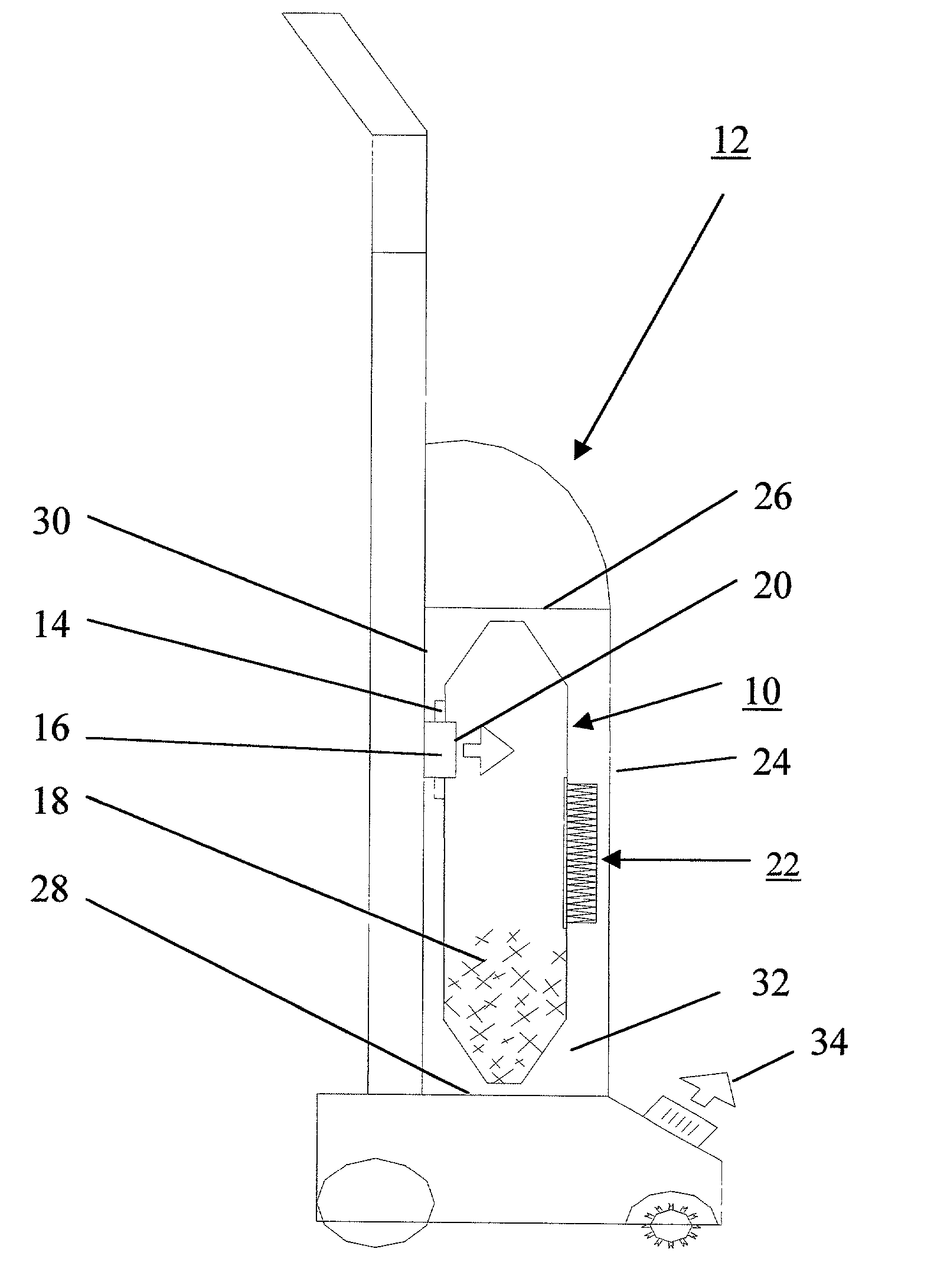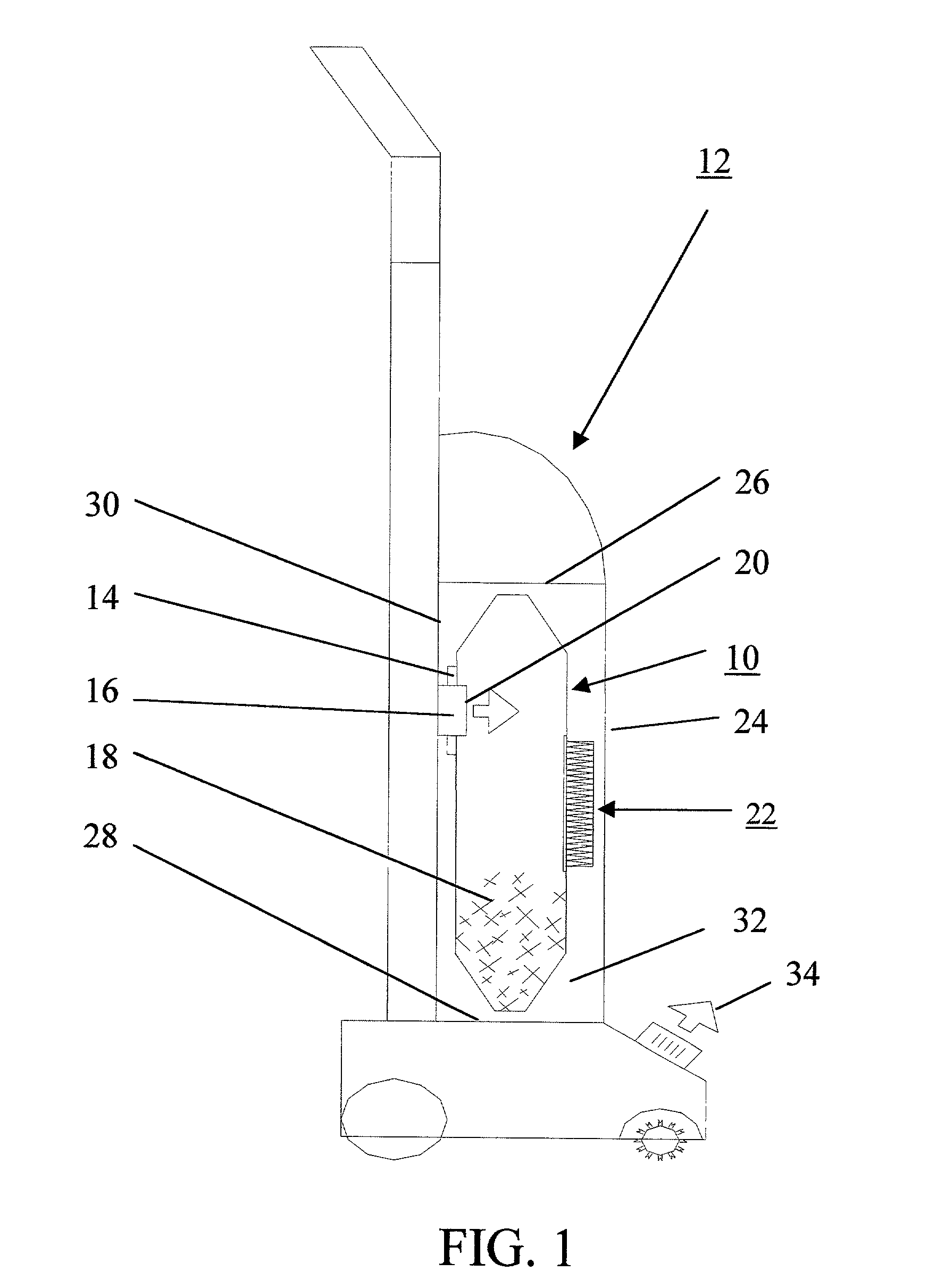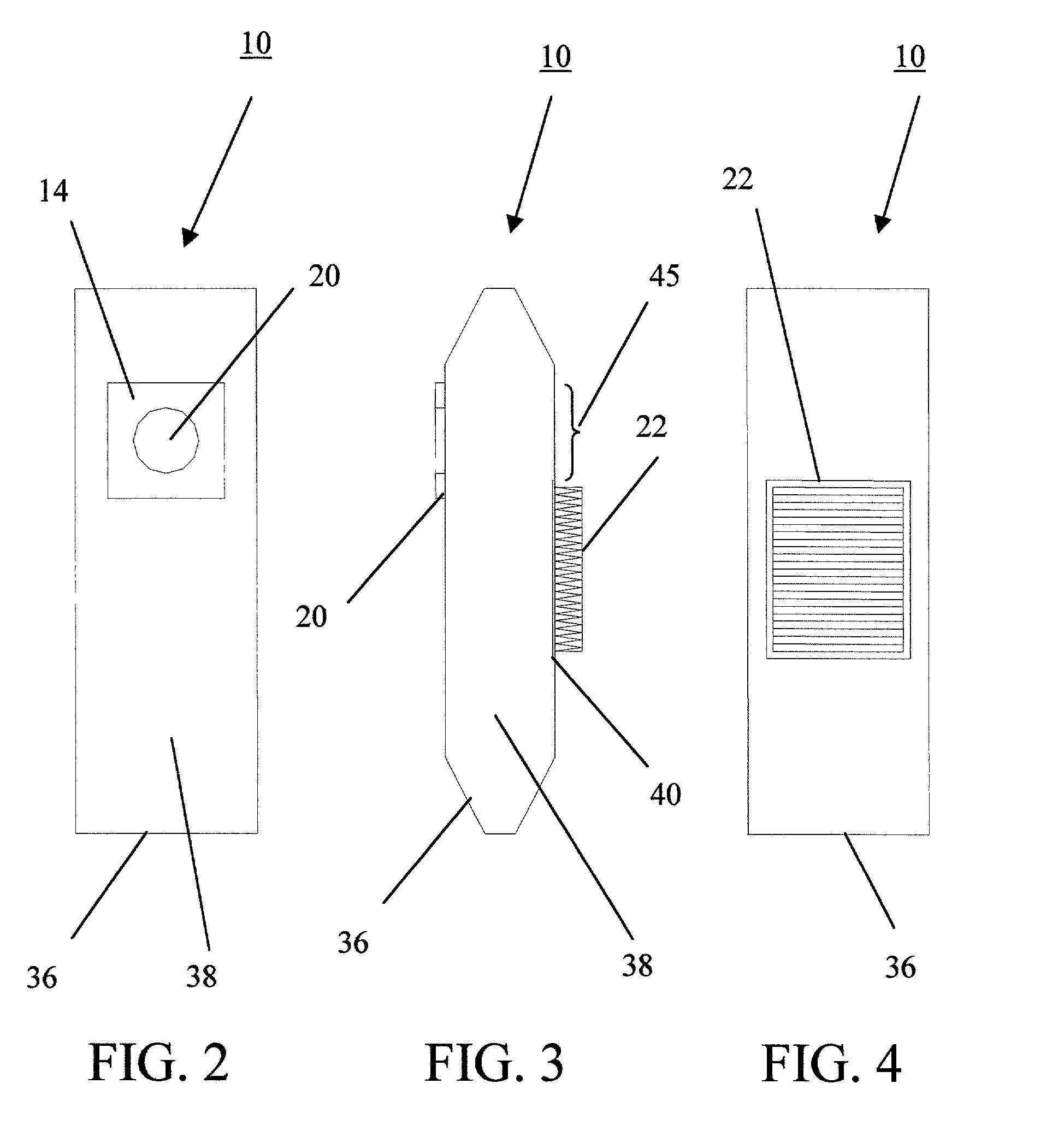Vacuum collection bag and method of operation
a vacuum cleaner and bag technology, applied in the field of vacuum cleaner collection bags in appliances, can solve the problems of poor filtration efficiency of paper filter media, dust emissions of vacuum cleaners, and poor filtration of paper bag filters without backup filters
- Summary
- Abstract
- Description
- Claims
- Application Information
AI Technical Summary
Benefits of technology
Problems solved by technology
Method used
Image
Examples
second embodiment
[0076] FIG. 9 shows in a cross sectional side view the bag open-end 46. A removable-top 52 is inserted in a top-frame 54 with a gasket 56 that closes the gap between the two components in an essentially leak-proof manner. The removable-top and top-frame are generally injection-molded components manufactured from thermoplastic materials, for example, polyethylene, ABS, polypropylene, etc. Cardboard or the like can also be utilized in lower life expectancy designs. Suitable gasket materials include any elastomeric material that will retain its resilient conformable properties over time such rubber, urethane, nitrile, foam, etc. A bond 58 seals impermeable media 36 to top-frame 54 in essentially a leak-proof manner. Acceptable bonds of the present invention are realized through a variety of techniques including heat fusion, adhesives, chemical bonding, etc.
[0077] FIG. 11 shows a third alternate bag open-end 46 of vacuum cleaner bag 10 of the present invention. Attached-lid 66 is connec...
fourth embodiment
[0078] FIGS. 13 and 14 show the present invention in front and back perspective views, respectively. A bag open-end 46 is adapted with a pair of complementary interlocking parts 98 for sealing the bag open-end closed. Interlocking parts 98 are also referred to as rolling action zippers, reclosable fasteners, interlocking elements, interlocking ribs and grooves, flexible fastener tracks, sliding clasp fasteners, profiled strip fasteners, and so on by those skilled in the art of manufacturing reclosable bags. Also shown is an optional straddling slider 96 that facilitates opening and closing the bag.
[0079] Referring to FIG. 15 one embodiment of the interlocking parts 98 are comprised of a male profile 100 extending the inside width of a front bag sheet 104 at the bag open-end 46 and a female profile 102 extending the inside of a back bag sheet 106 at the bag open-end 46. These profiles can be reversed so that the male profile is located on the back bag sheet and the female profile is ...
first embodiment
[0102] To empty the present invention, the impermeable media is unfolded at bag open-end 46 and dirt 18 is dumped out through the opening. If desired, the bag is filled with water and the interior of the vacuum cleaner bag, including the air-permeable particle separator, is washed with water or water with detergent. Once the vacuum cleaner bag is dry it is reinstalled and reused. Odor is also eliminated by dumping the contents of the bag after each use or when convenient.
[0103] FIG. 9 shows a second alternate opening of vacuum cleaner bag 10 of the present invention. To dump the contents of the vacuum cleaner bag, the operator pulls removable-top 52 so that it separates from top-frame 54. A handle (not shown) can be added to facilitate this procedure. As the removable-top is moved away from the bag, gasket 56 breaks the seal between removable-top 52 and top-frame 54. Impermeable media 36 remains attached to top-frame 54 due to bond 58. The gasket is generally captive in either of th...
PUM
| Property | Measurement | Unit |
|---|---|---|
| thick | aaaaa | aaaaa |
| impermeable | aaaaa | aaaaa |
| air-permeable | aaaaa | aaaaa |
Abstract
Description
Claims
Application Information
 Login to View More
Login to View More - R&D
- Intellectual Property
- Life Sciences
- Materials
- Tech Scout
- Unparalleled Data Quality
- Higher Quality Content
- 60% Fewer Hallucinations
Browse by: Latest US Patents, China's latest patents, Technical Efficacy Thesaurus, Application Domain, Technology Topic, Popular Technical Reports.
© 2025 PatSnap. All rights reserved.Legal|Privacy policy|Modern Slavery Act Transparency Statement|Sitemap|About US| Contact US: help@patsnap.com



